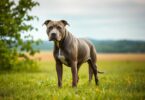Imagine a companion whose presence fills a room yet greets you with the warmth of a lifelong friend. This is the essence of the black Great Dane—a breed that combines grandeur with gentle loyalty. Known for their striking appearance and calm demeanor, these gentle giants have captured hearts for centuries.
This guide explores everything you need to know about owning one of these majestic pets. From their ancient origins to modern-day care, you’ll uncover how their noble stature pairs seamlessly with a loving personality. Whether you’re a seasoned pet owner or considering your first adoption, understanding their unique needs ensures a fulfilling relationship.
Inside, you’ll find expert-backed insights on nutrition, grooming, and training tailored to the breed’s specific requirements. Learn how to address common health concerns and create an exercise routine that keeps them thriving. Historical tidbits, like their recognition by the AKC, add depth to your knowledge.
By the end, you’ll feel equipped to decide if this breed aligns with your lifestyle. Their ability to blend into family life while commanding admiration makes them unforgettable companions. Let’s embark on this journey to uncover why so many cherish black Great Danes as lifelong partners.
The Rich History of Black Great Danes
Tracing the lineage of these noble animals reveals a journey spanning millennia. Artifacts from ancient Egypt and Babylon depict large, muscular canines resembling modern Great Danes. These early ancestors served as war companions and hunters, prized for their strength against formidable prey like wild boar.
Ancient Origins and Breed Development
German nobility later refined the breed, blending traits from English Mastiffs and Irish Wolfhounds. This cross-breeding enhanced their size and agility while softening their temperament. By the 16th century, they transitioned from hunters to estate guardians, earning admiration across Europe.
Evolution into a Beloved Family Pet
The American Kennel Club granted formal recognition in 1887, cementing their status as a distinct breed. Post-World War II, their role shifted again as families embraced their calm demeanor. Today, they rank among the most popular large breeds in the United States, balancing protective instincts with unwavering loyalty.
Unique Characteristics and Appearance
Combining grandeur with grace, the Black Great Dane is a breed that turns heads and wins hearts. These giants boast a sleek physique and soulful eyes, creating an unforgettable first impression. What truly sets them apart is how their imposing stature harmonizes with a warm, approachable personality.
Distinctive Coat, Markings, and Size
The breed’s short, glossy coat shines like polished onyx. Subtle white patches sometimes appear on the chest or toes, adding contrast to their striking appearance. Standing up to 32 inches tall, they can weigh between 110-175 pounds. Lean muscles and elongated legs create an elegant yet powerful silhouette.
Gentle Giant Temperament
Despite their formidable size, these canines exhibit remarkable patience and affection. They thrive on human interaction, often leaning against loved ones for gentle reassurance. This calm demeanor makes them excellent companions for families with children or other pets.
Essential Grooming and Care Tips
Maintaining a majestic companion’s well-being starts with consistent grooming habits. Their short coat and size demand tailored routines to prevent common health issues while enhancing comfort. Regular care not only preserves their sleek appearance but also strengthens the bond between pet and family.
Brushing and Bathing Basics
Weekly brushing removes loose hair and distributes natural oils for a glossy coat. Use a rubber curry brush to stimulate circulation without irritating sensitive skin. Baths every 6-8 weeks with hypoallergenic shampoo prevent dryness—rinse thoroughly to avoid residue buildup.
Health-Focused Maintenance
Trim nails monthly to protect joints and prevent painful splits. Check ears weekly for redness or odor, gently wiping with vet-approved solutions. Inspect paws for debris after walks. These steps reduce infection risks and help spot early signs of allergies or skin conditions.
Invest in large-breed grooming tools: a sturdy nail grinder, curved shears, and pH-balanced wipes. Pair routines with treats to create positive associations. Consistent care keeps the breed thriving and minimizes vet visits linked to preventable issues.
Proper Nutrition and Feeding Practices
Feeding a massive canine companion isn’t about quantity alone. Their rapid growth and unique metabolism demand precise nutritional strategies to support bone development and prevent obesity. Tailoring meals to their life stage and activity level ensures they thrive without unnecessary health risks.
Balanced Diet for Large-Size Breeds
High-quality kibble formulated for giant breeds provides essential nutrients like glucosamine and omega fatty acids. Look for protein sources like chicken or salmon as the first ingredient, paired with digestible carbohydrates. Avoid excess calcium, which can strain developing joints in puppies.
Veterinarians often recommend diets with controlled calorie density to maintain lean muscle mass. Supplements like fish oil may enhance coat health, while limited-ingredient options help sensitive stomachs. Always verify AAFCO certification to meet nutritional standards.
Portion Control and Hydration Strategies
Divide daily food into 2-3 smaller meals to reduce bloat risks. Use slow-feed bowls to prevent gulping air, a common trigger for gastric torsion. Measure portions precisely using a kitchen scale—overfeeding by even 10% can strain their frame.
Fresh water should always be accessible, but limit intake immediately after exercise. Elevated bowls improve swallowing mechanics while minimizing neck strain. Pair these habits with regular weight checks to adjust feeding plans as needed.
Common Health Issues and Preventative Care
Proactive care can make a significant difference in managing breed-specific health risks. While these gentle giants often live 7-10 years, understanding their vulnerabilities helps owners optimize their well-being. Early intervention and tailored strategies are vital for preventing complications.
Hip Dysplasia, Bloat, and Heart Conditions
Joint problems like hip dysplasia affect many large breeds. Maintaining a lean weight through portion control reduces joint stress. Gastric dilatation-volvulus (bloat) is a life-threatening emergency requiring immediate veterinary attention.
Dilated cardiomyopathy, a heart condition, may develop in later years. Watch for coughing, fatigue, or labored breathing. Feeding smaller meals and avoiding vigorous exercise after eating lowers bloat risks.
Early Detection and Veterinary Support
Schedule bi-annual vet check-ups to monitor heart function and joint health. X-rays can identify hip dysplasia early, allowing for pain management plans. Track changes in appetite or mobility—these often signal underlying issues.
Create a low-stress environment with non-slip flooring to protect joints. Use raised food bowls and slow feeders to aid digestion. Partnering with a vet familiar with giant breeds ensures personalized care strategies for your animal companion.
Training and Socialization for a Well-Behaved Companion
Building trust with a gentle giant starts with consistent, positive guidance. Early training socialization shapes their confidence and prevents anxiety-driven behaviors. For large breeds, foundational skills like “sit” and “heel” establish respect while keeping interactions safe.
Basic Obedience and Positive Reinforcement
Start with 10-minute sessions using treats or praise to reward desired actions. Focus on leash manners and impulse control—critical for managing their size. Avoid harsh corrections; these sensitive companions respond best to calm encouragement.
Advanced Techniques and Social Exposure
Gradually introduce new environments like parks or pet-friendly stores. Pair outings with interactive games that reinforce commands. Practice controlled greetings with strangers and other animals to build polite habits.
Incorporate training into family activities. Assign kids simple tasks like handing treats during “stay” drills. This teamwork strengthens bonds while teaching the dog to respect all household members. Consistency across settings ensures they remain a calm companion animal in any scenario.
Daily Exercise and Activity Guidelines
Keeping a large breed healthy requires a thoughtful approach to physical activity. These gentle giants thrive on routines that balance energy release with joint protection. Tailoring exercises to their size and age prevents injuries while nurturing their playful spirit.
Walks, Playtime, and Swimming Benefits
Start with two 20-minute walks daily for adult pets, adjusting for puppies or seniors. Short, frequent sessions protect developing joints while satisfying curiosity. Pair strolls with sniffing games to engage their minds and bodies.
Interactive play strengthens bonds and burns energy. Tug-of-war with durable ropes or fetch in fenced areas works well. Swimming offers low-impact exercise, ideal for maintaining muscle without stressing limbs. Always supervise water activities for safety.
Younger animals may need up to 60 minutes of activity split throughout the day. Older companions often prefer leisurely pacing. Incorporate puzzle toys during rest periods to keep their brains active.
Family involvement makes exercise enjoyable. Teach children to toss balls or join supervised playdates. Indoor obstacle courses using cushions work during bad weather. For more health care tips, explore our detailed guides on balancing activity with wellness.
Monitor your pet’s response to exercise. Panting, lagging, or stiffness signals it’s time to rest. Consistency helps them stay fit while deepening trust in their human pack.
Expert Insights: Caring for the dane dog black
Mastering the care of these gentle giants requires insights that go beyond basic pet ownership. Professionals emphasize tailoring routines to their physical and emotional needs while creating harmony within busy households. Let’s explore how expert strategies can simplify daily life while nurturing a thriving companion animal.
Understanding Breed-Specific Needs
Veterinarians and trainers agree: balancing exercise with mental stimulation is key. For example, puzzle feeders challenge their intellect while slowing mealtime. Experts from Off Leash by TryFi recommend GPS collars during outdoor adventures to monitor activity levels safely.
Nutrition plans should prioritize joint support and lean muscle maintenance. One study showed pairing glucosamine supplements with low-impact exercise reduced arthritis risks by 40%. Always consult your vet before introducing new routines.
Integrating Training with Family Life
Transform training into bonding moments. Assign kids age-appropriate tasks like hiding treats during “find it” games. This reinforces obedience while teaching responsibility. Smart tech like automatic treat dispensers can reward good behavior during your work calls.
Real-world success stories highlight structured schedules. A Texas family credits weekly “training picnics” for improving their pet’s leash manners. They combine walks with obedience drills at local parks, making learning feel like play.
Pros and Cons of Owning a Black Great Dane
Deciding to welcome a large breed into your home involves weighing both rewards and responsibilities. Their unique traits demand careful consideration of lifestyle compatibility. Let’s explore key factors to help you determine if this gentle giant fits your household.
Advantages as a Family and Guard Dog
These gentle giants excel as family pets due to their calm demeanor and natural protectiveness. Their loyalty shines through in how they bond with children, often acting as patient playmates. Despite their size, they’re known for being careful around smaller family members.
Their guarding instincts make them excellent watchdogs. They’ll alert you to strangers without excessive barking. Many owners appreciate their ability to blend protective behavior with a non-aggressive attitude.
Considerations and Potential Challenges
Health issues like hip dysplasia and bloat require proactive veterinary care. Their lifespan averages 7-10 years, shorter than smaller dog breeds. Budgeting for potential medical needs is essential.
Space constraints can pose challenges. They need room to stretch indoors and secure outdoor areas. Training demands consistency—their size makes leash manners crucial. Experts recommend starting obedience classes early to reinforce positive habits.
While their affectionate nature makes them wonderful pets, the commitment involves time and financial planning. Monthly costs for food and preventive care often exceed those for smaller dogs. Weighing these factors ensures you’re prepared for the joys and demands of ownership.
A Final Word on Embracing Your Majestic Companion
Welcoming a gentle giant into your life brings both joy and responsibility. These animals combine regal elegance with unwavering loyalty, making them unforgettable companions. Their striking appearance—glossy coats with occasional white markings on the chest—complements their affectionate nature.
Though their size demands thoughtful care, proper nutrition and exercise help them thrive today and for years. Regular vet visits, tailored grooming, and patient training build trust while addressing breed-specific needs. Families with children often find their calm demeanor ideal for creating lasting bonds.
Owning such a pet requires commitment, but the rewards are immense. Their ability to guard homes gently while showering loved ones with devotion proves why they’re cherished worldwide. Celebrate their unique traits by embracing both the challenges and daily joys they bring.
Ready to deepen your journey? Explore trusted resources for more insights into caring for these magnificent animals. Every moment invested strengthens the partnership with your noble friend.
FAQ
What health issues affect black Great Danes most frequently?
These dogs are prone to hip dysplasia, gastric torsion (bloat), and heart conditions. Regular vet checkups, proper feeding practices, and avoiding intense exercise after meals help reduce risks. Early detection through screenings like PennHIP can improve outcomes.
Are black Great Danes difficult to train due to their size?
Their intelligence and eagerness to please make training manageable with consistent positive reinforcement. Start obedience training early using rewards like Zuke’s Mini Naturals treats. Socialization with people and other animals during puppyhood is crucial for confidence.
How often should I groom a black Great Dane?
Weekly brushing with a Kong ZoomGroom removes loose hair and distributes skin oils. Bathe every 6–8 weeks using gentle shampoos like Earthbath Oatmeal & Aloe. Trim nails monthly and clean ears with VetWELL Ear Cleaner to prevent infections.










Leave a Comment